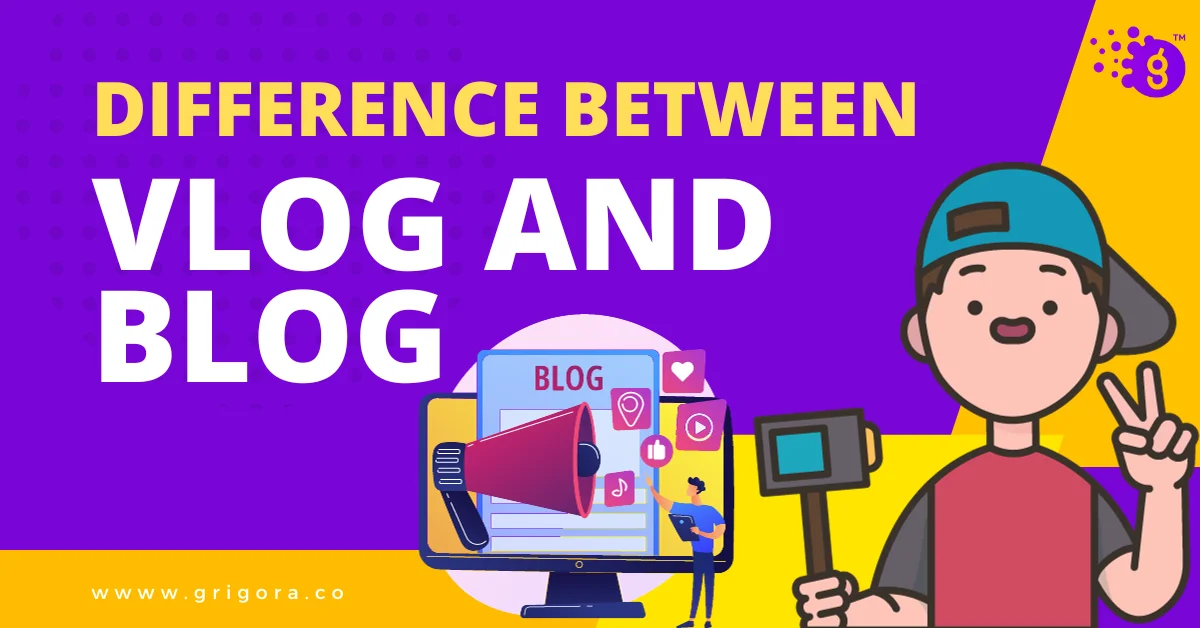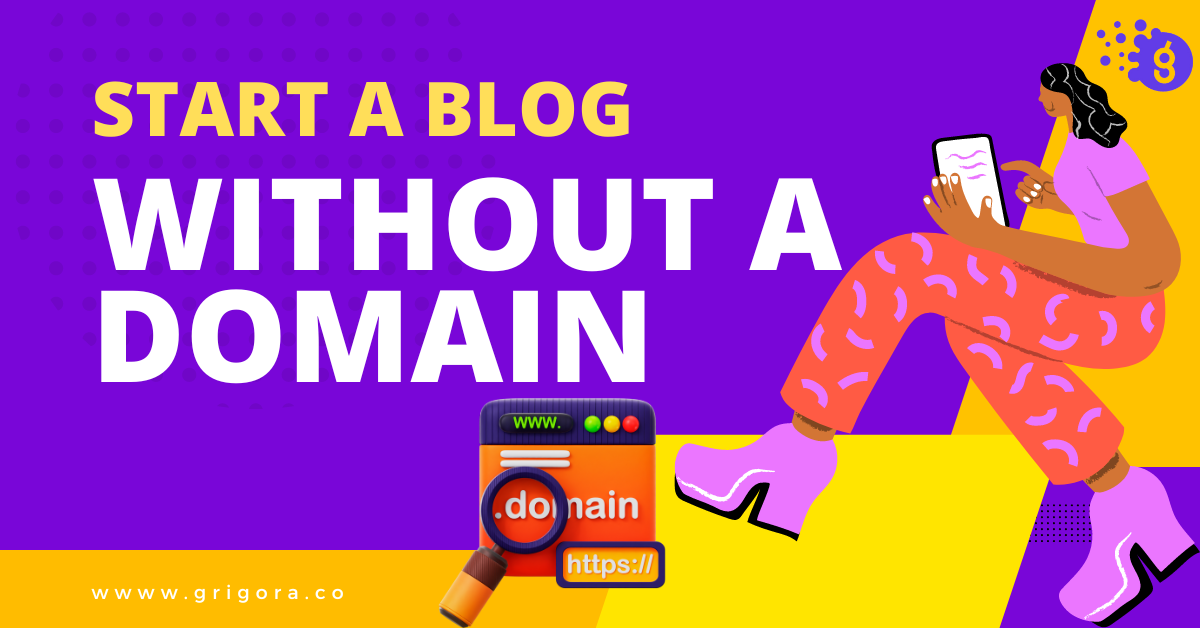Introduction
The Evolution of Digital Content Creation
"The medium is the message."
Marshall McLuhan
In the 21st century, digital content creation has evolved from simple text-based articles to a plethora of multimedia experiences. From blogs to vlogs and podcasts to social media posts, the options are endless. This evolution has given rise to new opportunities and challenges for content creators.
Understanding Blogs and Vlogs
Blogs and vlogs are two of the most popular forms of content today. While blogs are primarily text-based and often accompanied by images, vlogs are video-based content that offers a more interactive and personal touch. Both have their unique sets of advantages and disadvantages.
Why the Distinction Matters
Understanding the difference between a blog and a vlog is not just a matter of semantics. It can influence your approach to content creation, audience engagement, and monetization. Choosing the right medium can be the difference between online obscurity and becoming a digital sensation.

What is a Blog?
Definition and Origin of Blogging
A blog, short for "weblog," is a digital platform where individuals or organizations can publish articles, updates, and other text-based content. Blogs originated in the late 1990s as online diaries and have since evolved into a versatile medium used for various purposes, including journalism, education, and marketing.
Types of Blogs: Personal, Business, Niche
There are several types of blogs, each serving a different purpose:
Personal Blogs: These are individual blogs where the author shares personal experiences, opinions, and hobbies.
Business Blogs: These are professionally maintained blogs that aim to promote a business, product, or service.
Niche Blogs: These focus on a specific subject matter, such as travel, food, or technology.
Key Components: Text, Images, Links
The primary components of a blog are:
Text: The main content, is usually written in an engaging and informative manner.
Images: Visual elements that complement the text.
Links: Hyperlinks that lead to other relevant articles or sources.
What is a Vlog?
Definition and Origin of Vlogging
A vlog, or "video blog," is a form of blog where the medium is video. Vlogging came into prominence with the rise of video-sharing platforms like YouTube. Unlike blogs, which are text-based, vlogs rely on video content to convey messages, share information, or entertain.
Types of Vlogs: Daily Life, Reviews, Tutorials
Vlogs can be categorized into various types, much like blogs:
Daily Life Vlogs: These are video diaries where the vlogger shares snippets of their daily life.
Review Vlogs: In these vlogs, the vlogger reviews products, services, or experiences.
Tutorial Vlogs: These are educational vlogs that teach the audience how to do something specific.
Key Components: Video, Audio, Editing
The main elements of a vlog include:
Video: The primary content, which can range from unedited footage to highly produced pieces.
Audio: Sound quality is crucial in vlogs, as poor audio can detract from the viewer's experience.
Editing: Unlike most blogs, vlogs often require a fair amount of editing to make the video more engaging and watchable.
Similarities Between Blogs and Vlogs
Purpose: Inform, Entertain, Educate
Both blogs and vlogs serve similar core purposes:
Inform: They provide valuable information on a wide array of topics.
Entertain: Both mediums can be used for entertainment, whether it's through storytelling, humor, or other creative expressions.
Educate: Blogs and vlogs are educational tools that can teach skills, offer tutorials, or provide academic content.
Platforms: WordPress for Blogs, YouTube for Vlogs
Platform selection is crucial for both blogs and vlogs.
Blogs: WordPress is the most popular platform for blogging, although there are others like Blogger and Medium.
Vlogs: YouTube reigns supreme for vloggers, but platforms like Vimeo and Dailymotion are also used.
Monetization: Ads, Sponsorships, Affiliate Marketing
Monetization methods are quite similar for both blogs and vlogs:
Ads: Both can generate revenue through ad placements.
Sponsorships: Brands often sponsor content that aligns with their products or services.
Affiliate Marketing: Both bloggers and vloggers use affiliate links to earn commissions on sales.
Key Differences
Content Format
Blogs: Written Content
Blogs primarily rely on written content. They may include images, infographics, and even embedded videos, but the main focus is on the text. This allows for in-depth exploration of topics and is more SEO-friendly.
Vlogs: Video Content
Vlogs, on the other hand, are all about video content. While some vlogs may include text descriptions or subtitles, the video is the star of the show. This format is more engaging but can be time-consuming to produce.
Skill Requirements
Blogs: Writing, SEO, Graphic Design
For blogging, you need a specific set of skills:
Writing: Obviously, you need to be able to write well.
SEO: Understanding search engine optimization is crucial for getting your blog noticed.
Graphic Design: Basic skills may be needed for creating images or layouts.
Vlogs: Video Editing, Camera Skills, On-Camera Presence
Vlogging requires a different skill set:
Video Editing: You'll need to be proficient in video editing software.
Camera Skills: Understanding camera angles, lighting, and sound is crucial.
On-Camera Presence: Being comfortable in front of the camera is a must.
Audience Engagement
Blogs: Comments, Social Shares
Blogs engage audiences primarily through written content, which readers can comment on, share on social media, or reference in their own blogs. This creates a network of backlinks and discussions centered around the blog's content.
Vlogs: Likes, Comments, Subscriptions
Vlogs engage audiences in a more dynamic way. Viewers can like or dislike videos, leave comments, and subscribe to channels. The visual and auditory elements of vlogs can make them more emotionally engaging, leading to stronger community building.
Time Investment
Blogs: Research and Writing
Creating a blog post is often a time-consuming process that involves research, outlining, writing, editing, and finally publishing. Depending on the topic and the length of the post, this could take anywhere from a few hours to several days.
Vlogs: Filming and Editing
Vlogging also requires a significant time investment, but the tasks are different. You'll spend time planning the video, setting up your equipment, filming, and then editing. High-quality vlogs often require multiple takes and careful editing, which can be time-consuming.
SEO and Discoverability
Blogs: Text-Based SEO
Search Engine Optimization (SEO) is crucial for blogs. The text-based nature of blogs allows for a wide range of SEO strategies, including keyword optimization, meta descriptions, and backlinking. This makes blogs highly discoverable through search engines, which can lead to sustained organic traffic.
Vlogs: Video SEO and Thumbnails
Vlogs have their own set of SEO challenges and opportunities. Platforms like YouTube have algorithms that consider video watch time, user engagement, and relevance. Thumbnails and video titles also play a significant role in attracting viewers. Video SEO is less understood than text-based SEO, but it's equally important for discoverability.
Pros and Cons
Blogs
Pros: Easier to Start, SEO Benefits
Blogs are generally easier and less expensive to start. All you need is a domain name, hosting, and a content management system like WordPress. The text-based format also offers more straightforward SEO benefits.
Cons: Time-Consuming, Writing Skills Needed
The downside is that maintaining a blog can be time-consuming. You'll need to consistently produce high-quality content, which requires good writing skills and a lot of research.
Vlogs
Pros: Higher Engagement, More Personal
Vlogs often enjoy higher levels of user engagement. The video format allows for a more personal connection with the audience, which can lead to stronger community building.
Cons: Requires Equipment, Editing Skills
The main drawback of vlogging is the initial investment in equipment and software. Good-quality cameras, microphones, and video editing software can be expensive. You'll also need to spend time learning how to film and edit videos effectively.
Choosing Between a Blog and a Vlog
Your Skills and Interests
The first factor to consider is your own skill set and interests. If you're a natural writer and enjoy the research process, blogging might be more up your alley. On the other hand, if you're comfortable in front of a camera and have a knack for visual storytelling, vlogging could be a better fit.
Your Target Audience
Understanding your target audience is crucial. Different demographics may prefer different types of content. For example, younger audiences might be more inclined to watch videos, while an older or professional audience might prefer detailed, text-based articles.
Your Content Strategy
Your choice between blogging and vlogging should also align with your overall content strategy. If you're aiming to provide in-depth tutorials, written blogs with screenshots might be beneficial. Conversely, lifestyle or travel experiences might be better captured through video.
Why Grigora is Your Ultimate Solution for Blogging

Grigora offers an all-in-one platform that simplifies the blogging process, making it easier for you to focus on creating quality content. With its user-friendly interface, robust security measures, and a wide range of customization options, Grigora stands as a transformative platform for bloggers of all levels. Whether you're into personal blogging, niche blogging, or even vlogging, Grigora has the tools to help you succeed.
FAQs
Can I do both blogging and vlogging?
Absolutely, you can do both. Many content creators find that a mix of both blogging and vlogging allows them to reach a broader audience and express themselves in different ways. For example, you could write detailed articles for complex topics and create videos for more visual or personal subjects.
Which is more profitable: blogging or vlogging?
The profitability of blogging vs. vlogging can vary widely and depends on several factors, such as your niche, audience, and monetization strategies. Both have the potential to be profitable, but they also require different types of investment. Blogging often has lower startup costs, while vlogging may require more expensive equipment.
Do I need professional equipment for vlogging?
While professional equipment can enhance the quality of your videos, it's not strictly necessary to get started. Many successful vloggers began with just a smartphone. What's more important is the content and how it resonates with your audience.
How do I drive traffic to my blog or vlog?
Driving traffic to your blog or vlog involves a mix of quality content, SEO optimization, and social media marketing. Consistency and engagement with your audience also play a role in building and maintaining traffic.
Conclusion
Understanding Your Goals
It's essential to understand what you aim to achieve with your blog or vlog. Whether it's building a personal brand, sharing knowledge, or generating income, your goals will significantly influence your choice between the two.
The Flexibility of Combining Both
Remember, you're not limited to just one format. Many successful content creators use both blogs and vlogs to reach a broader audience and diversify their content streams.
Next Steps for Aspiring Content Creators
Once you've made your choice, the next step is to start creating. Consistency is key, so make a content calendar and stick to it. Monitor your analytics to understand what's working and what needs improvement.



